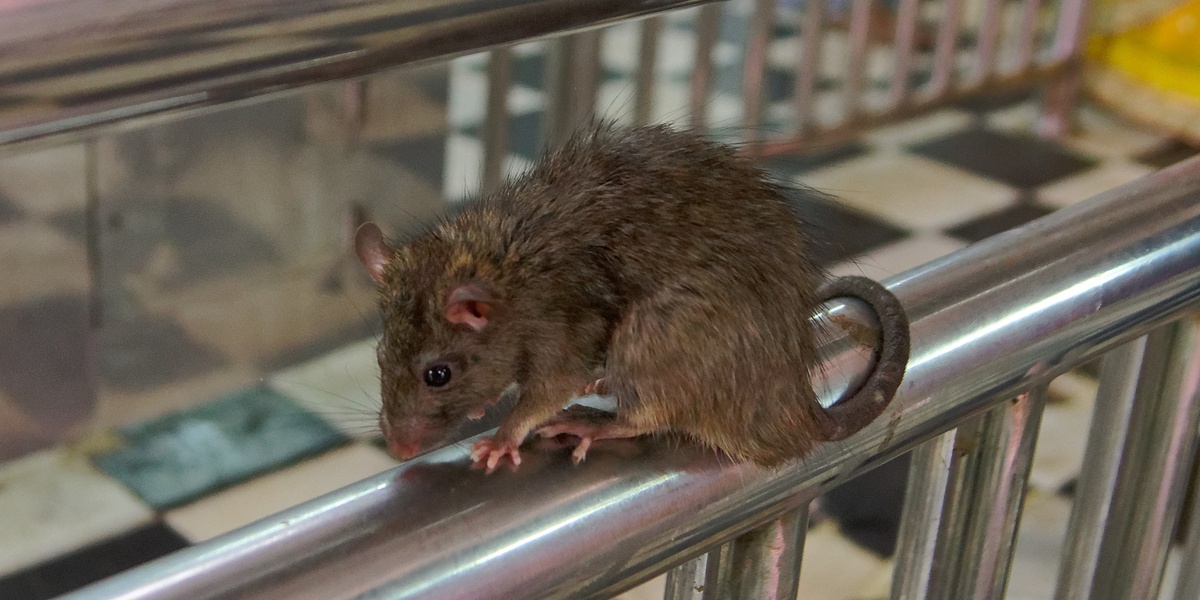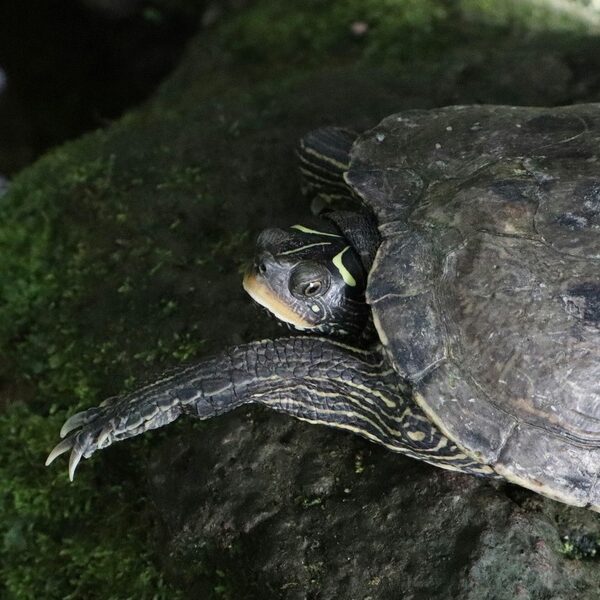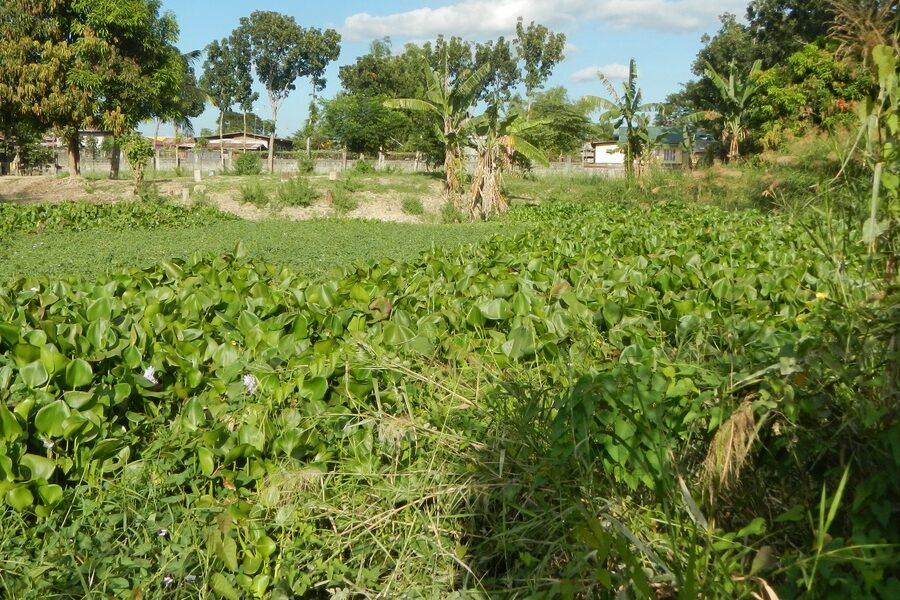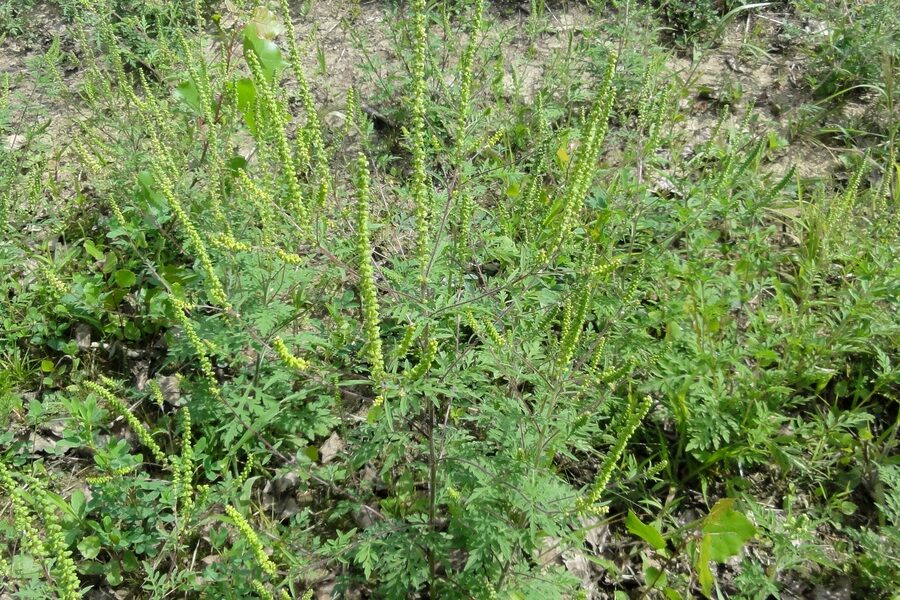Nauru’s small size, isolated location and history of phosphate mining make its habitats unusually sensitive to outside species. Disturbed soils, limited freshwater and regular human and shipping links mean a single new plant or insect can change local ecology and resources quickly.
There are 23 Invasive Species in Nauru, ranging from African Big-headed Ant to Water Hyacinth. For each entry the list shows Scientific name,Status in Nauru,Origin & pathway so you can compare how established each species is and how it likely arrived. The compilation focuses on organisms that affect ecosystems, infrastructure or livelihoods, and you’ll find below.
How do invasive species usually reach and spread across Nauru?
Most arrive via ships, cargo, ornamental plants or hitchhiking on goods and people; some spread naturally by wind, birds or floating vegetation. Once established, disturbed areas, limited predators and connected water bodies can speed local spread, so early detection at ports and in freshwater is key.
What practical steps can residents and visitors take to help prevent new invasions?
Clean gear and boats, avoid releasing pets or plants, inspect imported goods, and report unfamiliar species to local authorities. Community clearing of infestations, protecting native vegetation and simple public awareness make a big difference in slowing spread.
Invasive Species in Nauru
| Name | Scientific name | Status in Nauru | Origin & pathway |
|---|---|---|---|
| Feral Cat | Felis catus | Widespread and established | Middle East; introduced as domestic pets |
| Feral Pig | Sus scrofa | Established in vegetated areas | Eurasia; introduced for food |
| Cane Toad | Rhinella marina | Established, localized around freshwater | Americas; introduced for biological control |
| Pacific Rat | Rattus exulans | Widespread and long-established | Southeast Asia; stowaway on early canoes |
| Black Rat | Rattus rattus | Widespread and established | India/SE Asia; stowaway on modern ships |
| Brown Rat | Rattus norvegicus | Established, common near port/settlements | Northern China; stowaway on modern ships |
| Feral Dog | Canis lupus familiaris | Widespread and common | Eurasia; introduced as domestic pets |
| Asian House Gecko | Hemidactylus frenatus | Widespread and abundant | Southeast Asia; stowaway in cargo/shipping |
| Crazy Ant | Anoplolepis gracilipes | Established, forms disruptive supercolonies | SE Asia/Africa; accidental stowaway in cargo |
| African Big-headed Ant | Pheidole megacephala | Widespread and established | Africa; stowaway in soil and cargo |
| Coconut Rhinoceros Beetle | Oryctes rhinoceros | Established and a major pest | Southeast Asia; contaminated plant material |
| Taro Beetle | Papuana uninodis | Established agricultural pest | New Guinea region; accidental introduction |
| Oriental Fruit Fly | Bactrocera dorsalis | Established and economically damaging | Asia; imported fruit and produce |
| Lantana | Lantana camara | Widespread and established | Tropical Americas; ornamental horticulture |
| Leucaena | Leucaena leucocephala | Widespread, dominant in some areas | Central America; fodder/reforestation projects |
| Siam Weed | Chromolaena odorata | Widespread in disturbed areas | Tropical Americas; accidental contamination |
| Singapore Daisy | Sphagneticola trilobata | Established, common in coastal areas | Tropical Americas; ornamental horticulture |
| Mile-a-minute Vine | Mikania micrantha | Established and highly invasive | Tropical Americas; accidental introduction |
| Water Hyacinth | Eichhornia crassipes | Established in Buada Lagoon | South America; ornamental or aquarium trade |
| Giant Sensitive Plant | Mimosa diplotricha | Established in disturbed sites | Brazil; contaminated soil or machinery |
| Chain of Love | Antigonon leptopus | Established, escaped from gardens | Mexico; ornamental horticulture |
| Trumpet Tree | Cecropia peltata | Established in post-mining areas | Tropical Americas; accidental introduction |
| Spiny Amaranth | Amaranthus spinosus | Widespread weed in gardens and fields | Tropical Americas; agricultural contaminant |
Images and Descriptions
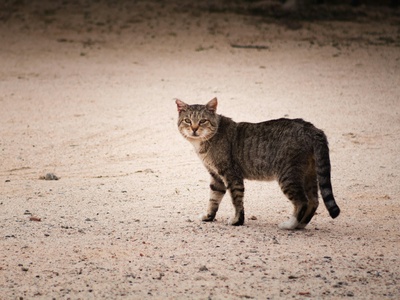
Feral Cat
A major predator found across Nauru. Feral populations threaten the island’s ground-nesting seabirds, native lizards, and insects. They are a primary driver of native wildlife decline and are notoriously difficult to manage in the island’s rugged interior, especially in mined-out areas.
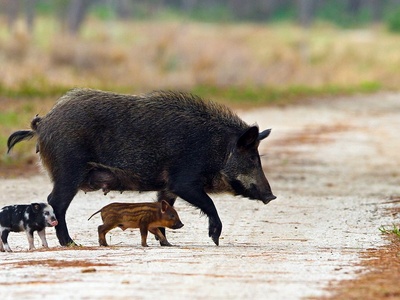
Feral Pig
Causes significant environmental damage by rooting up soil, which destroys native plant communities and facilitates the spread of invasive weeds. They also prey on ground-nesting birds and invertebrates, and can damage local food gardens, impacting both ecology and community agriculture.

Cane Toad
A toxic amphibian concentrated around Buada Lagoon. Its poison kills native predators, such as birds and lizards, that attempt to eat it. It also competes with native insectivores for food, disrupting the local food web and posing a significant threat to Nauru’s limited fauna.

Pacific Rat
The earliest introduced rat, now found island-wide. It is a major predator of seabird eggs and chicks, native invertebrates, and lizards. It also damages crops like coconut and pandanus and is a known pest in households, contaminating food stores.

Black Rat
An agile climber, this rat is devastating to Nauru’s birdlife, preying on eggs and nestlings in trees and shrubs. It is a major agricultural and household pest, damages infrastructure, consumes stored food, and can transmit diseases, posing both ecological and public health risks.

Brown Rat
This larger rat species is a major threat, particularly around human settlements and port areas. It damages infrastructure by burrowing, preys on native wildlife, and competes aggressively with other rat species. It is a significant vector for human and animal diseases.
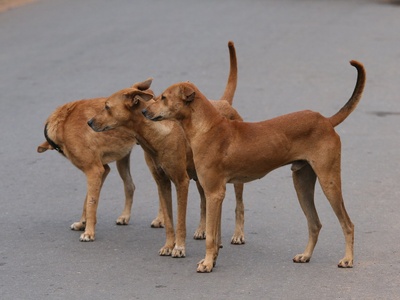
Feral Dog
Packs of feral and free-roaming dogs pose a threat to both people and wildlife. They are known to attack and kill native birds, disturb seabird colonies, and can be aggressive towards residents. Their presence is a public health concern and a management challenge.
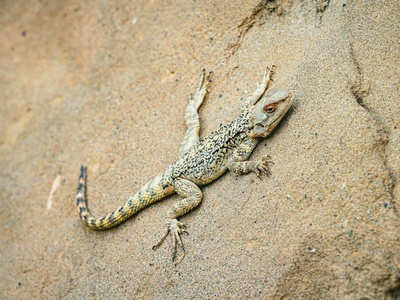
Asian House Gecko
This highly successful gecko is now common on buildings and in vegetated areas across Nauru. It aggressively outcompetes and displaces native gecko species for food and territory, leading to declines in local reptile populations and altering the island’s invertebrate community.
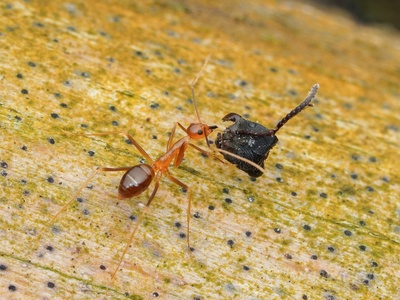
Crazy Ant
Forms massive, dense supercolonies that overwhelm the island’s ecosystems. This ant displaces native invertebrates, attacks seabird chicks in their nests, and is a significant nuisance to residents. Its presence disrupts nutrient cycling and threatens Nauru’s fragile terrestrial biodiversity.
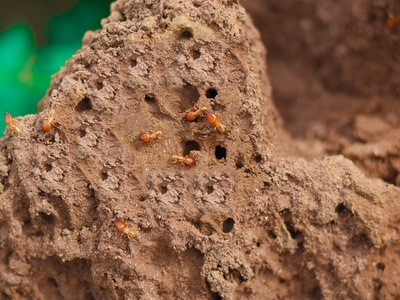
African Big-headed Ant
This aggressive ant is a major threat to Nauru’s native invertebrates, including other ants, insects, and spiders. It is a dominant species in disturbed habitats and can also invade homes and agricultural areas, causing widespread ecological disruption and becoming a significant pest.
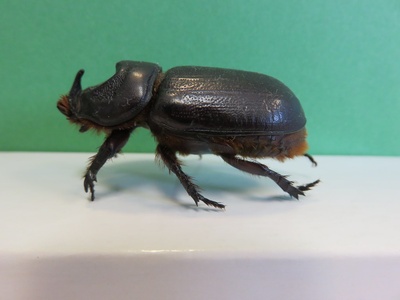
Coconut Rhinoceros Beetle
A destructive pest of coconut palms, a culturally and economically vital tree in Nauru. The adult beetle bores into the palm’s crown to feed on sap, damaging developing fronds. Severe infestations can weaken and kill trees, threatening the island’s coconut production.
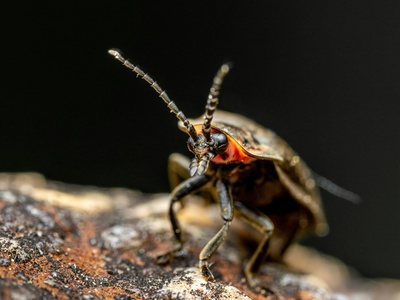
Taro Beetle
A serious threat to Nauru’s food security. The adult beetles and their larvae tunnel into the corms of taro, a staple food crop, rendering them inedible. This damage significantly reduces crop yields and impacts the livelihoods of local farmers who depend on taro.

Oriental Fruit Fly
This pest attacks a wide variety of fruits and vegetables, making them unfit for consumption. The female fly lays eggs in ripening fruit, and the resulting maggots destroy the pulp from within. It severely impacts local horticulture and limits potential for agricultural export.
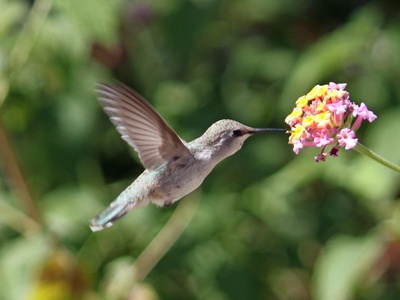
Lantana
This thorny, toxic shrub forms dense, impenetrable thickets in disturbed areas, especially post-mining landscapes. It aggressively outcompetes native plants for resources, reduces biodiversity, and its berries are poisonous to both humans and livestock. Its spread is a major conservation concern.
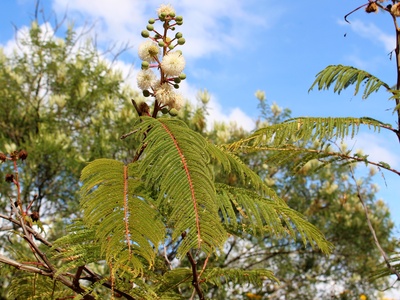
Leucaena
This fast-growing tree now forms dense monocultures across many post-mining landscapes. Initially introduced for rehabilitation, it aggressively outcompetes native plants for light and water, preventing the recovery of Nauru’s original forest ecosystems and reducing overall biodiversity.
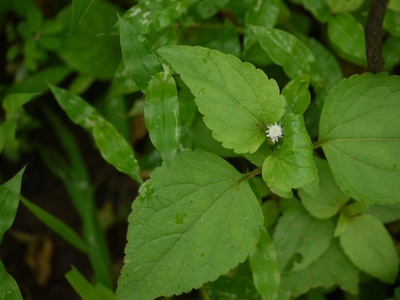
Siam Weed
A highly aggressive perennial weed that rapidly colonizes open, disturbed land, including roadsides and agricultural areas. It smothers native vegetation, reduces pasture quality, and is highly flammable when dry, increasing fire risk across the island. It is a major threat to land restoration.
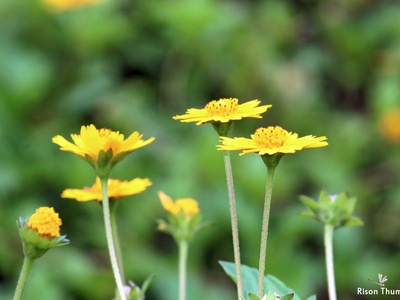
Singapore Daisy
Originally planted as a groundcover, this species has escaped cultivation and now forms dense, sprawling mats. It smothers low-growing native plants, prevents the germination and establishment of native seedlings, and contributes to the erosion of coastal soils by displacing deep-rooted native species.
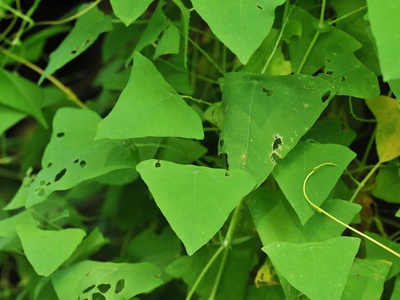
Mile-a-minute Vine
A fast-growing, smothering vine that can grow several inches per day. It climbs over and completely covers other plants, including shrubs and trees, blocking sunlight and eventually killing them. It is a major threat to regenerating forests and agricultural areas on Nauru.
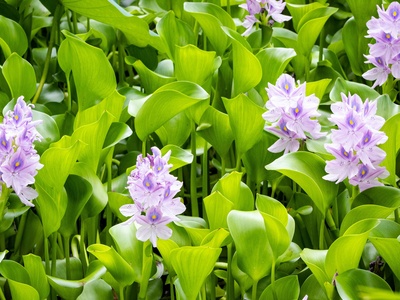
Water Hyacinth
This free-floating aquatic plant forms dense, suffocating mats on the surface of Buada Lagoon, Nauru’s only freshwater lake. It blocks sunlight, reduces dissolved oxygen levels, kills native aquatic life, and impedes access to the water for fishing and recreation.

Giant Sensitive Plant
A prickly, scrambling shrub that forms dense, thorny thickets, making areas impassable for people and wildlife. It overtakes agricultural land and disturbed sites, smothering crops and native vegetation. The sharp thorns are a painful nuisance and hinder management efforts.

Chain of Love
A beautiful but aggressive climbing vine that has escaped gardens. It uses its tendrils to climb over and smother native shrubs and trees, depriving them of sunlight. Its rapid growth allows it to dominate disturbed areas and forest edges, reducing native plant diversity.

Trumpet Tree
A fast-growing pioneer tree that quickly colonizes disturbed land, especially the limestone pinnacles of the mined-out interior. It outcompetes native pioneer species, alters forest succession, and creates a monoculture that supports far less biodiversity than native regenerating forest.

Spiny Amaranth
A common weed in cultivated and disturbed areas. It competes directly with food crops for water, nutrients, and light, reducing garden yields. Its sharp spines at the base of the leaves deter grazing and make manual removal painful and difficult for farmers.
